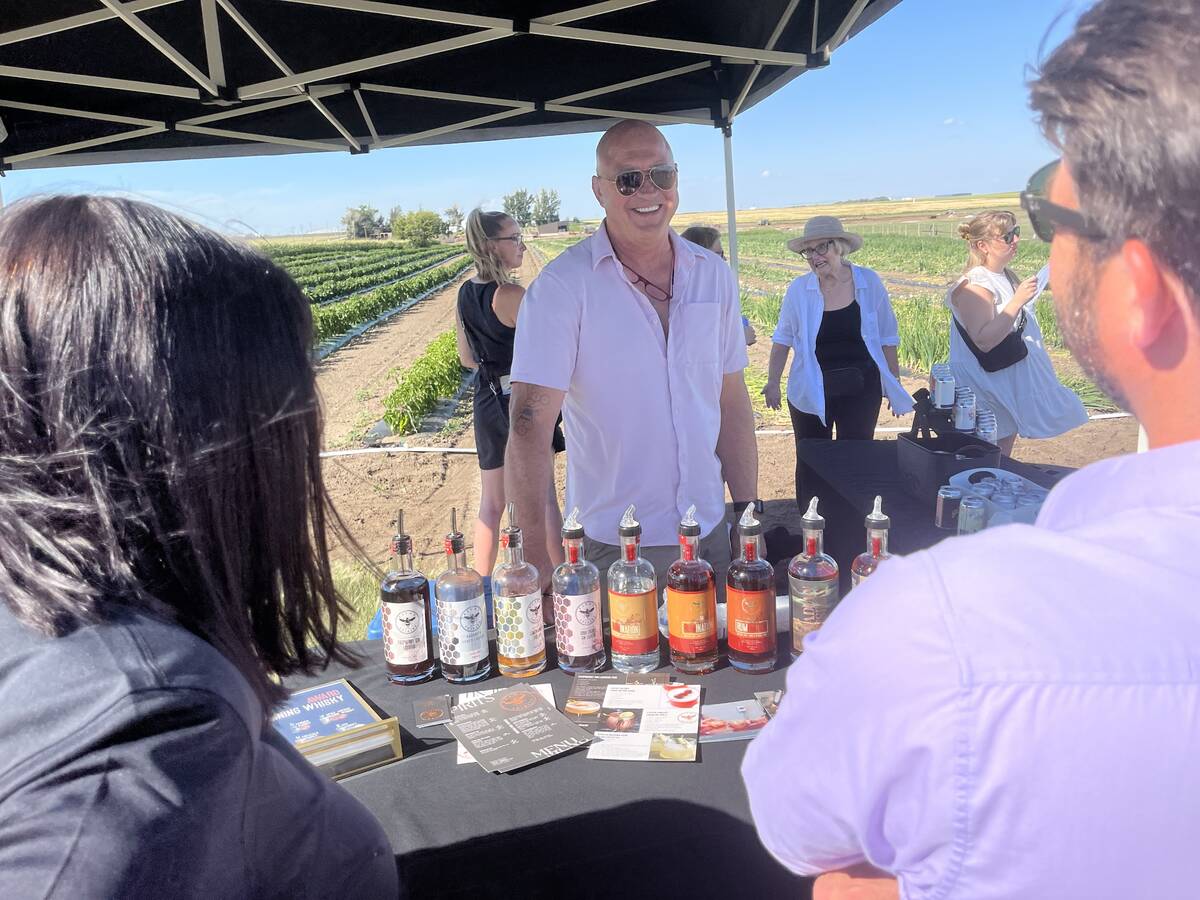CABRI, Sask. – The mighty South Saskatchewan River looks more like a series of creeks north of Cabri this year, its eroded banks exposed and sandbars dividing it into water lanes. The unusually low water levels are due to below-normal precipitation during the winter and growing season.
Irrigators like Willie Karwandy normally draw water from the river five times a season to irrigate their fields, but a fall watering of his alfalfa fields is doubtful in the Miry Creek irrigation project.
Despite the shortages, however, Karwandy was still better off than his dryland neighbours this year.
Read Also

From farmer to award-winning distiller
Pivot Spirits showcases transition from farmer to distiller with provincial award-winning results in Alberta for Lars Hirch
He recently toured dryland crops between Cabri and Pennant that were too short and thin to be harvested, and said irrigation allowed him to feed and maintain his herd.
“It’s an insurance policy if you want to stay in the cattle business,” said Karwandy, who has 155 irrigated acres with his daughter Luone and her husband David Hagel. They also raise Limousin cattle and grow cereals and forages on the home farm near Pennant, Sask.
He said feed shortages and high prices will force many producers to sell their animals this fall.
Karwandy, a director with the Saskatchewan Irrigation Projects Association, or SIPA, hopes the dry conditions will force the provincial government to take another look at the untapped potential of existing irrigation projects.
The Lake Diefenbaker project was originally designed to irrigate 300,000 acres. Close to 100,000 acres have been developed, but 30,000 acres could be added to the existing infrastructure.
He said “infill” on existing projects is needed before building new dams on the river, such as the Meridian proposal.
However, it is expensive for a producer to bring irrigation to his land. The irrigation association is asking for money to provide hookups at every quarter section, with the remaining costs borne by the producer.
Bringing on new irrigation costs between $100 and $350 per acre, depending on how close land is to the infrastructure.
Karwandy pays about $70 an acre a year plus lease fees and taxes for water and equipment. It is labour intensive from May to August, and higher power rates were an added cost this year, he said.
In the South Saskatchewan Irrigation District, about 5,000 acres could be brought on at about $175 an acre. Riverhurst on the east side of the lake could add 6,500 more acres, while Lucky Lake on the west side could increase by 4,000 acres.
Karwandy, who hopes to see all irrigators represented by his association one day, believes agricultural irrigation is a better fit with the province’s agriculture department than with its current regulator, Sask Water.
SIPA president James Harvey feels that irrigation has not been a big priority for the government, but said the timing might be right to revisit it.
“The joke is that there’s nothing like a good drought to make irrigation look good.”
Harvey said developing hog barns and feedlots hinges on having a good and secure source of nearby feed. Irrigation also helps farm diversification. The irrigated Moon Lake district south of Saskatoon where he farms showcases the potential of irrigation, with a host of fruit farms, market gardens and turf growers.
“The benefit may not be there if growing a low-price commodity,” he conceded.
Red Williams, of the University of Saskatchewan’s animal sciences department, said moving away from cereals to higher-value crops must be co-ordinated with the development of processing and markets, and improved roads for hauling heavy loads.
“You have to develop everything. Just being able to produce products is not enough.”
Other impediments could include local regulations and “anti-development” sentiments in the district.
He said soil in some irrigation districts may not lend itself to irrigation, where overwatering can bring salt to the surface.
Sask Water is now gathering information and reviewing irrigation projects in the province. It will submit its strategy to the finance department in late October.
John Linsley, manager of ag services for Sask Water, said the biggest irrigation area is around Outlook.
He said there is tremendous potential for the production of seed potatoes, beans, timothy hay, and mint, and the development of intensive livestock operations, which can supply manure for fertilizer. More hog manure can be applied to irrigated acres than to dryland fields, he added.
Water overuse is not a problem, he said, because irrigation now accounts for only two percent of the average annual inflow into Lake Diefenbaker.
“Irrigation is a very marginal user,” he said. “We use less than the evaporation off the lake right now.”
The farmer benefits in many ways, Linsley said.
“We can generate per acre four to five times the returns on any of the dryland areas. Everyone wishes they had irrigated hay; its like gold.”
In good years, Harvey noted the Moon Lake district sees 45 to 50 bushel crops that jump to 70 with irrigation. This year, some are as low as 10, while his irrigated land is still getting 60.
Citing fields of alfalfa near Leader, Sask., that are so dry they cannot even be used for pasture, he said irrigation can make a significant difference.
“It lets you sleep at night, especially in a year like this.”














